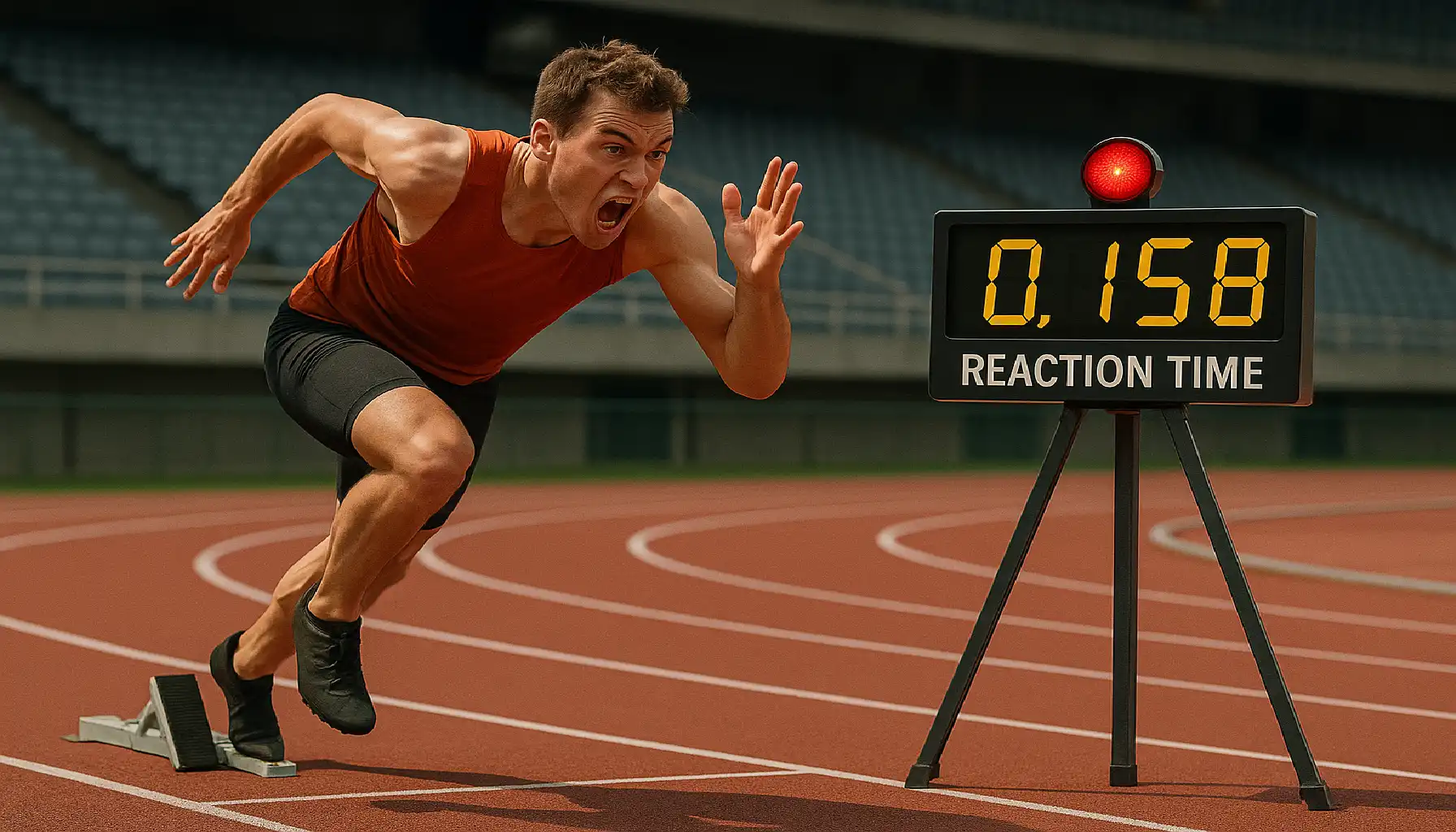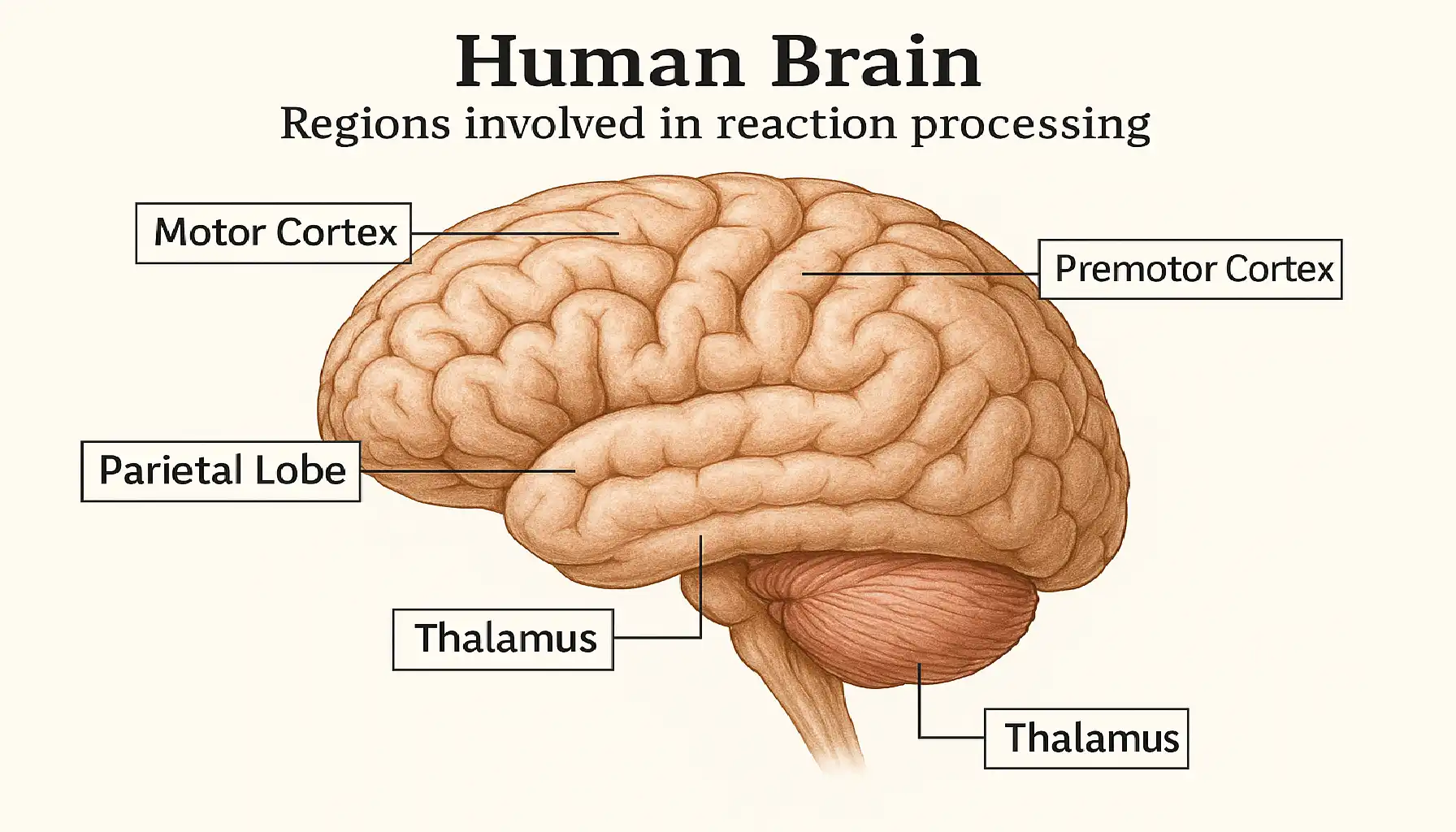Boost Your Reaction Speed With These Proven Methods

Contents:
Reaction affects how quickly you respond to the world around you. It's a thing that makes humans react when they are trying to avoid danger, answer questions, play sports, or make decisions under pressure. Fast reaction time helps you stay safe, sharp, and effective.
Before we’ll talk about reaction time training you can give your brain a head start with the Mind Elevateapp. It’s an app available on Android which has science-backed brain games like memory drills, logic puzzles, and attention challenges. Mind Elevate helps sharpen your reaction and response time. It’s daily practice even with free memory games for the part of your brain that makes decisions fast.
If you’re trying to pass a reaction time test or simply keep your mind sharp, this app helps you track and improve your performance. It’s a fun way to monitor your progress if you’re working on how to improve reaction time day by day.

What Is Reaction Time?
Reaction time is the speed at which you detect a stimulus and respond to it. It's made up of two parts: stimulus time (how fast you register the input) and response time (how fast your brain tells your body to move). Reaction speed affects not athletes or gamers only. It determines how quickly we, average humans, process information and make decisions. Of course human reaction time has an impact on your life: driving, clicking a mouse in a game, answering a teacher’s question, and so on. Lots of other things depend on your reflexes.
Reaction time relies on a network of brain regions working together. It begins in the sensory cortex, which picks up incoming stimuli such as sights, sounds, or touch. This information is then routed through the thalamus, it's a relay station and directs the signal to the appropriate processing areas. The prefrontal cortex intercepts the stimulus and decides how to respond.
If the decision is made, the motor cortex sends a signal to your muscles to take action. Meanwhile, the cerebellum refines that movement, so it’s smooth and coordinated. The speed and efficiency of this entire chain determine how fast you react in any situation.
Knowing what is reaction time and how to improve it makes you think faster. If your brain and body work together, you will get better overall performance in tasks that need speed and focus. We don’t mean sports only. There are plenty of things, as you may guess, that can be improved in your daily life with a simple better reaction.

What Is the Average Human Reaction Time?
For most people, the average time to a visual stimulus is around 250 milliseconds (ms). Trained people can push this lower, professional gamers often average around 150 ms, which is considered extremely fast. Your own result might differ depending on whether you’re using a touch screen, mouse, or keyboard. To see where you stand, take a reaction time test online or try one using simple materials like a ruler. In fact, elite e-sports players use human benchmark reaction time tools to improve performance.
Try It Yourself: Ruler Drop Test
You don’t need high-tech gear to test reaction time. One of the simplest tools is a ruler drop test, which mimics basic reaction time games without a screen. Hold a ruler vertically and have another person catch it as quickly as possible when you release it. Measure how far it fell before being caught, then convert that distance into milliseconds using a reaction time conversion chart. It's the best way to test average reaction time, and it’s a great classroom or family activity.
Many variables influence human reaction time:
Age (reaction time slows with age)
Fatigue or lack of sleep
Distractions in the environment
Physical health and hydration
Sensory system used (sight is slower than touch)
Genetics, personality type, and mental alertness
Even body temperature can affect it, for example, warmer muscles react faster. And yes, you can monitor response time over multiple trials and help reveal patterns and areas for improvement.
Reaction Time Exercises You Can Try
If you're serious about how to increase reaction time, start with daily practices:
Use brain-training apps like Mind Elevate
Try classic reaction time games like tapping when a color changes
Practice catching tossed objects (like a ruler or ball)
Improve focus through breathing and mindfulness
Eliminate background distractions when training
All of these are valid forms of reaction time training if you're an athlete, student, or gamer.
Another fun way to improve speed and accuracy is through a card-based exercise. Shuffle a deck and try to flip and sort the cards as quickly as possible. Start simple (flipping them one by one), then increase complexity (sort by color, then by suit, then by face value).

As tasks become harder, you’ll notice your reaction time stretch, which is a perfect training zone. You may notice it’s the same process as with lifting heavier weights which builds muscle. Same thing with reaction, more complex decisions build faster processing.
Another tests you may try:
Use sound cues instead of visual ones. For example, have someone call out a word or make a sound at random intervals while you sit with your eyes closed, and your job is to clap or tap the table as fast as possible once you hear it. This kind of unpredictable trigger helps train your brain to stay alert and switch into action mode instantly.
You can also try using lights. A simple method is to have a row of flashlights or even apps that flash different colors at random. As soon as a light goes on, you tap the corresponding button or area. The quicker and more random the changes, the more your brain has to work to keep up. This mirrors real-life situations where you’re forced to make split-second decisions without knowing exactly what’s coming next. while athletes use specialized reaction time exercises in their physical training.
Even casual video games can help, especially games that need quick reflexes, like rhythm games, timing puzzles, or reaction-based mobile apps. The main parts of the exercise is to stay actively engaged in something where hesitation has a clear consequence, like losing a point or missing a target. The pressure makes your brain learn to cut through the noise and act fast. The fastest reaction time in the world recorded under controlled conditions is roughly 120 ms, though this varies based on the test format.
Finally, conversations themselves can serve as reaction tests. Try playing a back-and-forth word game where one person says a word, and the other has to respond with a related word in less than two seconds. This trains your ability to think fast while staying connected to context, much like what happens during interviews, debates, or quick decision-making moments in daily life.

Can Reaction Time Be Trained?
Yes and consistently. If you're trying to beat your own reaction time game score or maybe you want to become more alert in daily life, reaction speed can be improved at any age.
Studies show that even adults over 60 can improve reaction speed through targeted activities and regular practice. And if you're using a reaction time test to track progress, keep a record over time. Like strength training, improvements often happen slowly but steadily.
Training Method | Effect on Reaction Time |
Ruler Drop Test | Simple measurement of visual-motor reflexes |
Brain Apps (e.g. Mind Elevate) | Trains speed, accuracy, and attention |
Card Sorting Game | Increases complex decision-making speed |
Exercise + Sleep | Improves overall neural response and alertness |
Mindfulness Practice | Reduces hesitation and improves focus |
Limiting Distractions | Improves response time consistency |
Also read: Stanford-Binet Intelligence Scales Explained.
Your average reaction time is not fixed. With daily habits, physical movement, mental drills, and sharper focus, you can lower your human reaction time and respond faster in all areas of life.
So if you’re looking to achieve the fastest human reaction time possible for your age and goals, start small and stay consistent. Use simple tools, apps, or even a ruler — and keep training. You don’t need to be a pro gamer or athlete to benefit from better reflexes.
And if you’re wondering how to improve reaction time without changing your lifestyle completely? Just pick one thing like a daily game, better sleep, or 5 minutes of focus. Because every millisecond counts.





